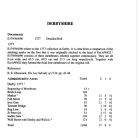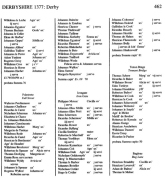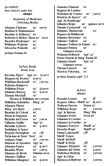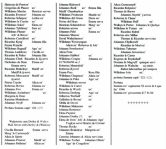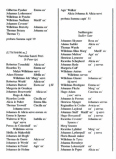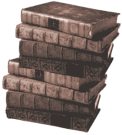
Apoll tax, head tax, or capitation tax is a tax of a portioned, fixed amount per individual in accordance with the census (as opposed to a percentage of income). Poll taxes were important sources of revenue for many governments from ancient times until the 19th century.
The Poll Tax that was taken in 1377, 1379 and 1381
The word poll is an English word that once meant "head", hence the name poll tax for a per-person tax. However, the term has come to be used almost exclusively for a fixed tax applied to voting. Since "going to the polls" is a common idiom for voting (deriving from the fact that early voting involved head-counts), a new folk etymology has supplanted common knowledge of the phrase's true origins in America.
The English poll taxes of 1377, 1379, and 1381 taxed householders, wives, dependents, and servants individually. The tax records therefore provide information about people who are rarely, if ever, mentioned in other documents.
In England, the poll tax was essentially a lay subsidy (a tax on the movable property of most of the population) to help fund war. It had first been levied in 1275 and continued, under different names, until the 17th century. People were taxed a percentage of the assessed value of their movable goods. That percentage varied from year to year and place to place, and which goods could be taxed differed between urban and rural locations. Churchmen were exempt, as were the poor.
[edit] 14th century
John of Gaunt, the regent of Richard II of England, levied a poll tax in 1377 to finance the war against France. This tax covered almost 60% of the population, far more than lay subsidies had earlier. It was levied three times, in 1377, 1379 and 1381. Each time the basis was slightly different. In 1377, everyone over the age of 14 years who was not exempt had to pay a groat (4d) to the Crown. By 1379 that had been graded by social class, with the lower limit raised to 16, and 15 two years later. The levy in 1381 was particularly unpopular, as each person aged over 15 was required to pay the amount of one shilling, which was then a large amount. This played a role in provoking the Peasants' Revolt in 1381, due in part to attempts to restore feudal conditions in rural areas.
![]() L.S.D in the table below refers to the money paid. Before the days of decimal money in Britain, we used Pounds, Shillings and Pence. This was abbreviated to L = pounds, S = shillings and D = pence.
L.S.D in the table below refers to the money paid. Before the days of decimal money in Britain, we used Pounds, Shillings and Pence. This was abbreviated to L = pounds, S = shillings and D = pence.
DERBYSHIRE:
Documents TNA E 179/364/96
Detailed Roll Derby
Administrative Areas |
Taxed |
L |
S |
D |
| Derby 1377 | ||||
| Beginning of Membrane | 15+ | |||
| Brede Leap | 110 | |||
| Market | 76 | 11 | 5 | 4 |
| Full Street | 70 | 11I | 3 | 4 |
| Iron Gate | 81 | 11 | 7 | 0 |
| Tennant Bridge | 50 | 1 | 16 | 8 |
| Bag Lane | 19 | 6 | 4 | |
| St Peter | 51 | 1 | 17 | 0 |
| Sadler Gate | 128 | 12 | 2 | 8 |
| Wall Street nth Darley and Walicis | 121 | 12 | 0 | 4 |
| Total | 1,046 | 17 | 8 | 8 |
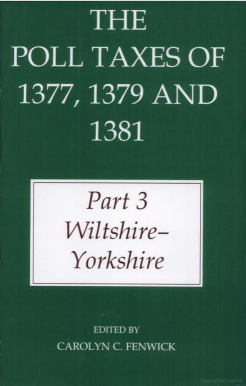
|
Summary Page |
|
|
Derby Page 3 |
|

